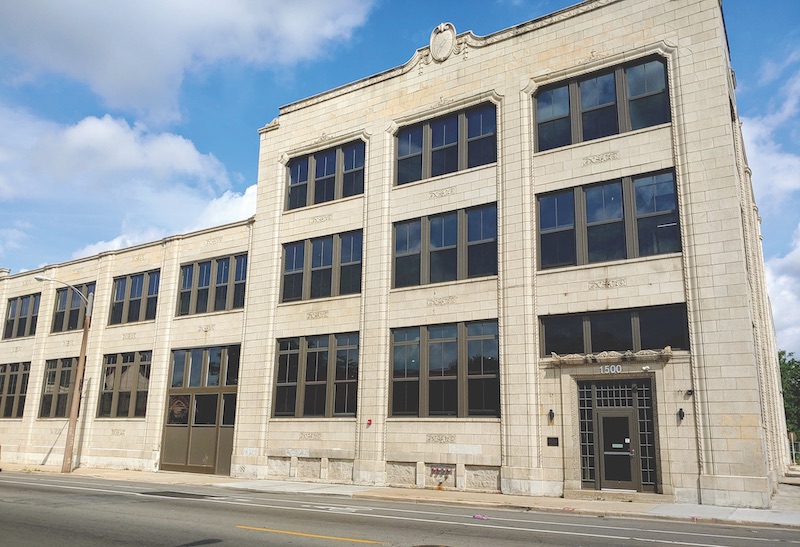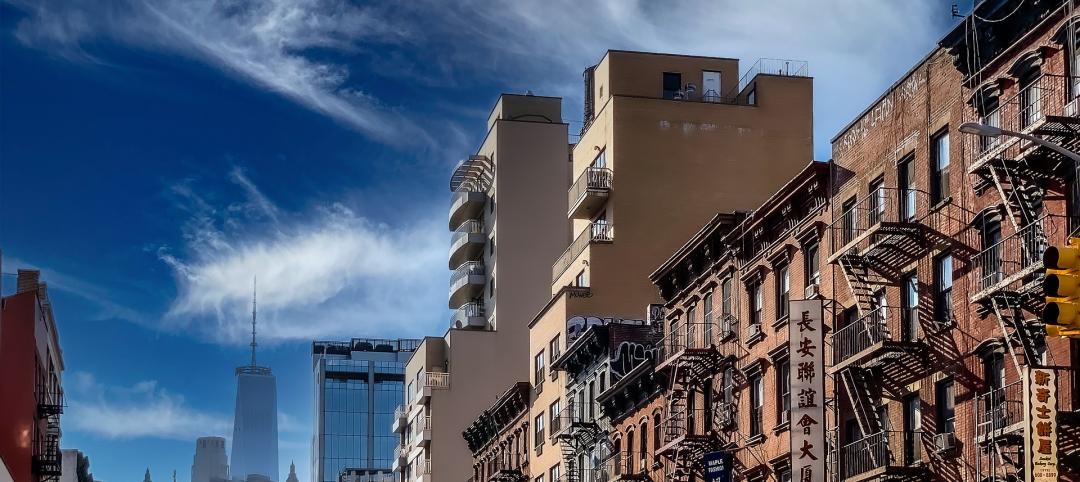David Block fell in love with the Blommer Ice Cream Company factory the nanosecond he first saw it, seven years ago. Block, an architect, city planner, and Director of Development with Evergreen Real Estate Group, Chicago, was on a scouting mission to Milwaukee to scope out development opportunities.
“It really caught my eye,” he recently recalled, as we gazed at the building from across North Avenue. “All the beautiful windows were blocked up, but it had a presence that called to me. I knew immediately that I wanted to do something with it.”
Block soon heard about Sally Peltz, Founder (now Board Member) of the nonprofit Legacy Midwest Renewal Corporation. “We were looking for a stellar project for workforce housing for the neighborhood,” said Peltz, a Milwaukee native and activist. In short order she and Block formed an alliance to convert the three-story industrial structure into much-needed rental housing.
It took a dedicated project team six years to pull off, but last December, Legacy Lofts began leasing its 64 apartments, 54 of which were set aside for families below 60% AMI, including 16 for the homeless. Legacy Lofts is now 100% occupied and, as we shall see, has become a beacon of hope for the struggling Lindsay Heights neighborhood.
But first, let’s time travel back a century and a half and meet Conrad Blommer.
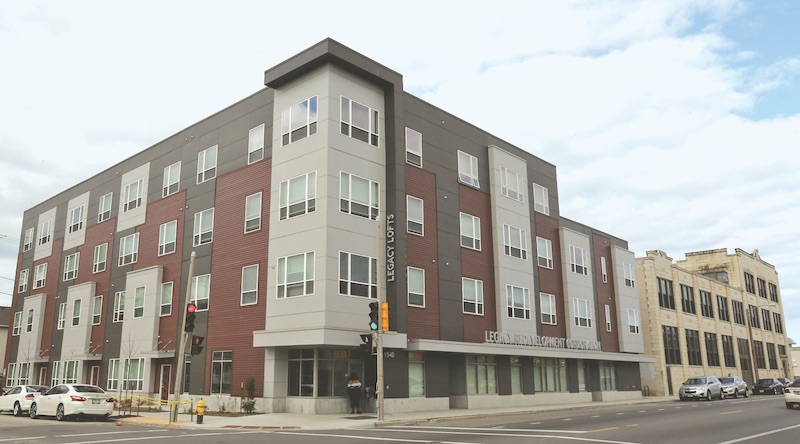 The addition to the original Blommer factory, Legacy Lofts. Photo: Tricia Shay.
The addition to the original Blommer factory, Legacy Lofts. Photo: Tricia Shay.
AN ENTERPRISE BUILT ON ICE
Conrad Blommer (pronounced “Blummer”) opened his first candy store and ice cream parlor in Milwaukee in 1870. Forty years later, he built a small ice cream plant at 15th Street and North Avenue. By the early 1920s, with the addition of four factories in Wisconsin, his company was producing half a million gallons a year—8% of all the ice cream made in the state.
To keep up with demand, Blommer commissioned local architect Vernon H. Esser (1891-1970) to design an addition several times larger than the original plant. Esser’s design stressed what he called “the advertising value of beauty and sanitation in industrial buildings.” Completed in 1927 and outfitted with the latest equipment, the two- and three-story factory, clad in cream-colored terra cotta and Italian Renaissance detailing that combined cleanliness with delicacy, began producing ice cream products that were “practically untouched by human hands.”
Not long after the new factory was completed, however, Blommer Ice Cream merged with two other dairies to form Wisconsin Creameries, which operated the plant until 1934. By 2012, when Block happened upon it, the factory had been vacant for decades. It would take six years for Block and Peltz to realize their vision for the property.
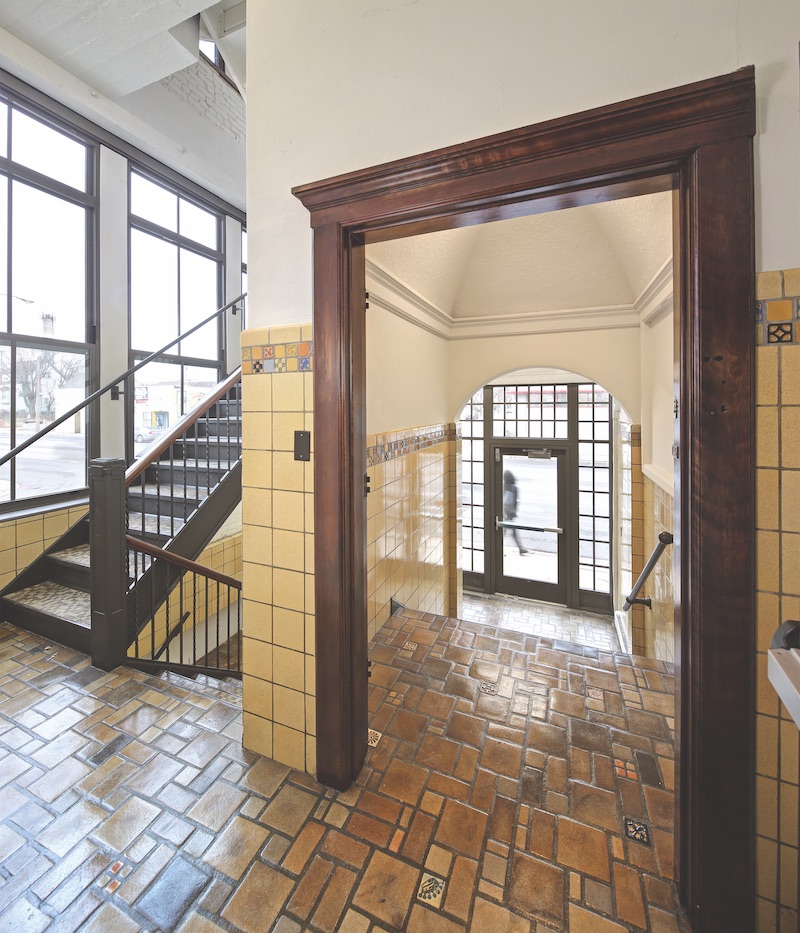 The entry vestibule and stairs feature period floor tiles and tile wainscoting accented with small tiles that purportedly described the many flavors of Blommer ice cream. The State Historic Preservation Officer stated the rehabilitation “successfully incorporated” the entryway and tiles. Photo: Tricia Shay.
The entry vestibule and stairs feature period floor tiles and tile wainscoting accented with small tiles that purportedly described the many flavors of Blommer ice cream. The State Historic Preservation Officer stated the rehabilitation “successfully incorporated” the entryway and tiles. Photo: Tricia Shay.
OVERCOMING STRICT REGULATORY DEMANDS
Financing for the $13.8 million reconstruction of the 45,000-sf Blommer building and 32,000 sf of new construction hinged on getting historic preservation tax credits. MacRostie Historical Advisors guided the application through the State Historic Preservation Officer and the National Park Service (NPS) to get the Blommer plant deemed “locally significant” under the National Register of Historic Places (Criterion A) in late 2017.
The Wisconsin Housing and Economic Development Authority (WHEDA) provided $7.7 million in low-income housing tax credits and an $8.5 million construction loan. Additional funding came from IFF and the Federal Home Loan Bank’s Affordable Housing Program. The project gained a total $2.8 million in historic tax credits. Associated Bank bought the state credits; US Bank bought the federal credits. The city contributed $690,000 in HOME funds and $635,000 through a developer-financed TIF district.
“The multiple layers of financing that allowed this project to go through were very strict in their requirements,” said lead architect Falamak Nourzad, NCARB, AIA, LEED AP, ASID, Principal, Continuum Architects + Planners, a local MWBE design firm with a lengthy record of historic renovations in Milwaukee. “WHEDA dictated that the units had to be a certain size. HUD [U.S. Department of Housing & Urban Development] has guidelines that are well above ADA. And you have to deal with the National Park Service, especially on the exterior.”
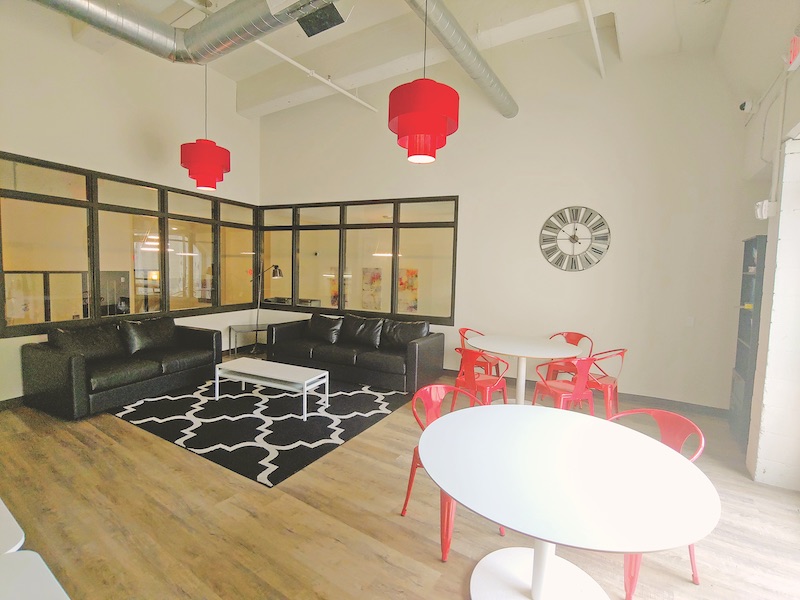 A 450-sf library and multipurpose community room was carved out from the old loading dock. “It gets busy in the afternoon with families and kids reading and doing homework,” said Xavier Shands, On-site Property Manager, Evergreen Real Estate Group. Photo: Roziel Reyes.
A 450-sf library and multipurpose community room was carved out from the old loading dock. “It gets busy in the afternoon with families and kids reading and doing homework,” said Xavier Shands, On-site Property Manager, Evergreen Real Estate Group. Photo: Roziel Reyes.
To meet NPS’s historic preservation requirements, the 26-unit contemporary addition was stepped down from four stories at the western corner to three stories adjacent to the Blommer building. “That cost us a few units, but it worked out in the end,” said Nourzad.
The Wisconsin Historical Society, which acts as the State Historic Preservation Officer, stated, “As a general rule, new construction cannot exceed the height of the historic building. However, a compromise was reached where only the portion closest to the historic building had to be reduced one floor in height and the remaining portions could remain taller.”
Continuum Principal Michael A. Soto, NCARB, AIA, said that, while the Blommer building was structurally sound, the project team took pains to be careful with the terra cotta. “It really is a timeless material,” he said. He commended the NPS and other authorities for being “really willing to listen and work with us.”
See Also: Techno-magnet: Proto Kendall Square
The contemporary design of the new section was purposeful in its intent. “We wanted to be respectful of the old building, but copying it was something that neither we nor the NPS wanted,” said Nourzad.
To overcome a four-foot grade difference in the historic building that made ADA accessibility hard to achieve, Continuum and the contractor, Greenfire Management Service, took advantage of the building’s existing internal grade difference to create a double-height lobby; a resident library/game room overlooks the lobby. The project team was then able to modify the elevator to stop at the lower level for ADA compliance.
The project team outfitted Legacy Lofts with amenities that defy its “primarily affordable” label: a library/community room, the spacious lobby, individual storage, some off-street parking, in-unit washers and dryers, ceiling heights that go up to 20 feet, polished concrete floors, and beautifully restored windows, many as tall as 10 feet.
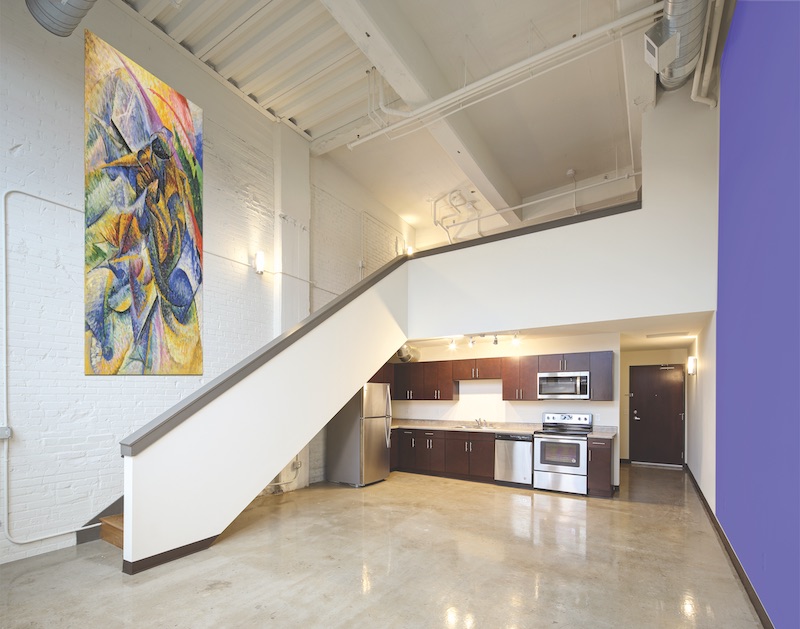 Apartments in Legacy Lofts range in size from 500 to 1,600 sf. Townhomes in the new addition measure 1,200 to 1,400 sf. Units have generous ceiling heights, as much as 20 feet in some cases. Legacy Redevelopment Corp., the lending arm of co-developer Legacy Midwest Redevelopment Corp., has an office in the new construction portion of Legacy Lofts. Photo: Tricia Shay.
Apartments in Legacy Lofts range in size from 500 to 1,600 sf. Townhomes in the new addition measure 1,200 to 1,400 sf. Units have generous ceiling heights, as much as 20 feet in some cases. Legacy Redevelopment Corp., the lending arm of co-developer Legacy Midwest Redevelopment Corp., has an office in the new construction portion of Legacy Lofts. Photo: Tricia Shay.
THE POWER OF POSITIVE THINKING
Does the success of Legacy Lofts signal a turnaround for Lindsay Heights? The neighborhood, founded by German immigrants, was once a stop in the Underground Railroad. Russians and Poles followed, to be succeeded by African-Americans.
Today, African-Americans comprise 87% of Lindsay Heights residents, versus 39% citywide. Nearly half of its households (46%) live below the poverty level (29% citywide); 40% are headed by single women (22% citywide). Two-thirds of the housing stock (66%) was built before 1940 (37% citywide).
“This has been a distressed area for a long time, but the resurgence of downtown is coming up all the corridors,” said Peltz. The city is “very concerned,” she said, about making sure the neighborhoods get their share of new development—“not just the gentrified areas near Lake Michigan.”
As evidence of this resurgence, she cited last year’s opening of the nearby Fiserv Forum, the new $524 million home of the NBA Milwaukee Bucks, where the Democratic Convention will be held next July (Milwaukee beat out Houston and Miami Beach for the honor), and local developer Haywood Group’s plans to turn the vacant Sears store six blocks west of Legacy Lofts into an 80-key Ikon Hotel.
Then there’s the renovation of the historic Walter Schmidt Tavern into Tandem, a popular new restaurant; institutions like the Innovations and Wellness Commons and Walnut Way, nonprofits that promote wellness and neighborhood development; and Lindsay Heights’s designation as Milwaukee’s first “ECO-Neighborhood.”
As Peltz told me, Legacy Lofts is yet another symbol of “the tremendous growth and new branding of Milwaukee.”
Related Stories
MFPRO+ News | Jul 22, 2024
6 multifamily WAFX 2024 Prize winners
Over 30 projects tackling global challenges such as climate change, public health, and social inequality have been named winners of the World Architecture Festival’s WAFX Awards.
MFPRO+ News | Jul 15, 2024
More permits for ADUs than single-family homes issued in San Diego
Popularity of granny flats growing in California
Vertical Transportation | Jul 12, 2024
Elevator regulations responsible for some of ballooning multifamily costs
Codes and regulations for elevators in the United States are a key factor in inflating costs of multifamily development, argues a guest columnist in the New York Times.
MFPRO+ New Projects | Jul 2, 2024
Miami residential condo tower provides a deeded office unit for every buyer
A new Miami residential condo office tower sweetens the deal for buyers by providing an individual, deeded and furnished office with each condo unit purchased. One Twenty Brickell Residences, a 34-story, 240-unit tower, also offers more than 60,000 sf of exclusive residential amenities.
Student Housing | Jul 1, 2024
Two-tower luxury senior living community features wellness and biophilic elements
A new, two-building, 27-story senior living community in Tysons, Va., emphasizes wellness and biophilic design elements. The Mather, a luxury community for adults aged 62 and older, is situated on a small site surrounded by high-rises.
MFPRO+ New Projects | Jun 27, 2024
Chicago’s long-vacant Spire site will be home to a two-tower residential development
In downtown Chicago, the site of the planned Chicago Spire, at the confluence of Lake Michigan and the Chicago River, has sat vacant since construction ceased in the wake of the Great Recession. In the next few years, the site will be home to a new two-tower residential development, 400 Lake Shore.
MFPRO+ News | Jun 25, 2024
New York mayor releases multi-year plan to address affordable housing crisis
The plan seeks to create and preserve affordable housing. It will incentivize the inclusion of permanently affordable and rent stabilized housing in new, multi-family construction projects.
Student Housing | Jun 25, 2024
P3 student housing project with 176 units slated for Purdue University Fort Wayne
A public/private partnership will fund a four-story, 213,000 sf apartment complex on Purdue University Fort Wayne’s (PFW’s) North Campus in Fort Wayne, Indiana. The P3 entity was formed exclusively for this property.
Apartments | Jun 25, 2024
10 hardest places to find an apartment in 2024
The challenge of finding an available rental continues to increase for Americans nation-wide. On average, there are eight prospective tenants vying for the same vacant apartment.
MFPRO+ News | Jun 24, 2024
‘Yes in God’s Backyard’ movement could create more affordable housing
The so-called “Yes in God’s Backyard” (YIGBY) movement, where houses of worship convert their properties to housing, could help alleviate the serious housing crisis affecting many communities around the country.


